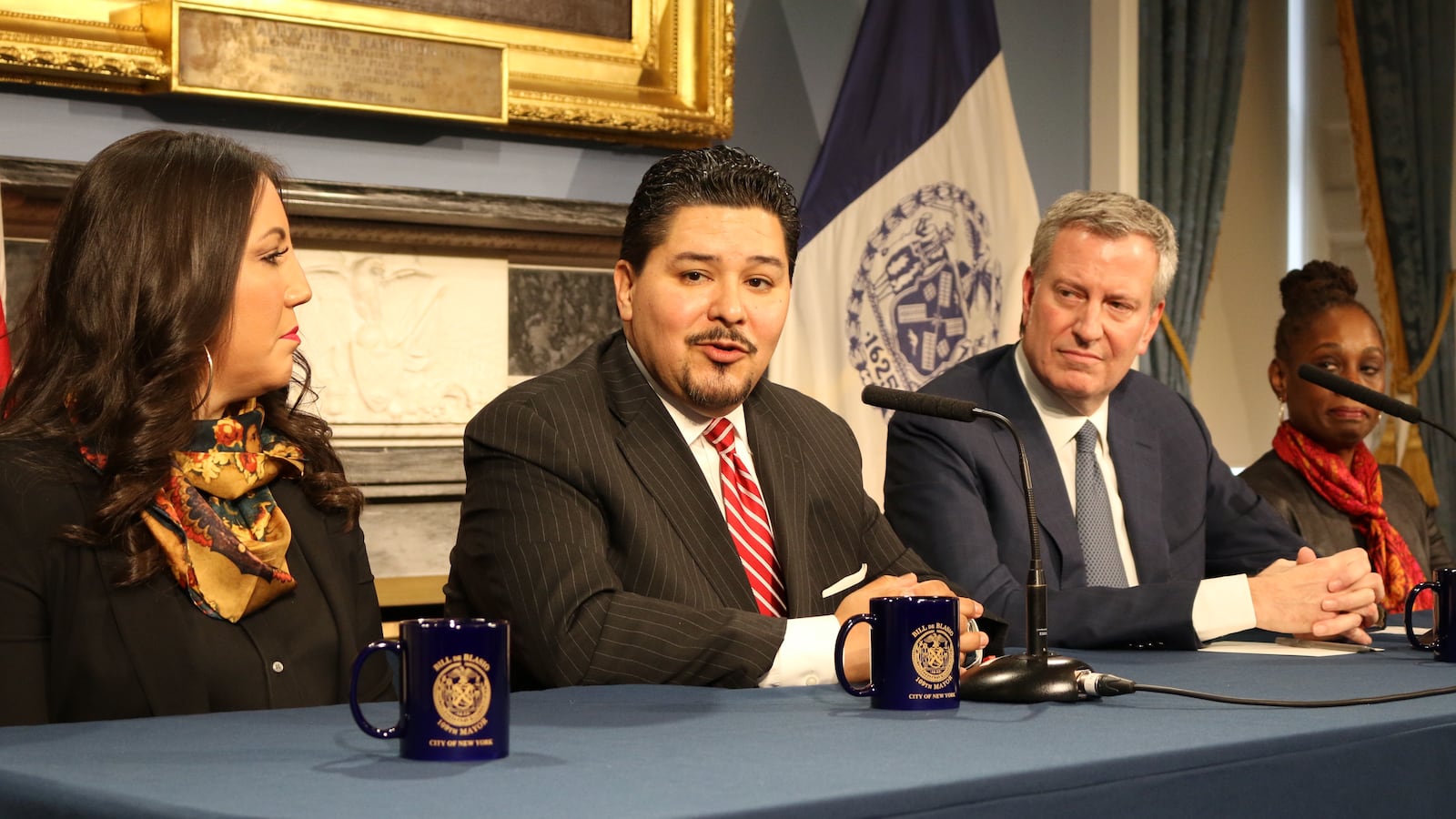As the superintendent of Houston’s Independent School District, Richard Carranza was responsible for one of the nation’s largest school systems. But when he takes the reins from retiring schools Chancellor Carmen Fariña in the coming weeks, he will oversee a system that is five times larger and arguably the country’s most complex.
Carranza, who shares much of Fariña’s educational philosophy, is taking over a system that has posted some improvements during de Blasio’s first term: Graduation rates and test scores have incrementally increased (despite persistent achievement gaps). And de Blasio has earned plaudits for orchestrating a smooth rollout of universal pre-K — a program that is now being expanded to 3-year-olds.
But numerous political and policy challenges remain. Here are seven issues Carranza will be forced to contend with in the coming months:
1. How will he address the heightened debate about school safety and discipline?
In the aftermath of a fatal stabbing at a Bronx high school earlier this school year, and one of the deadliest school shootings in U.S. history, there has been increased attention to student discipline and how to keep schools safe.
De Blasio has staked out a relatively progressive vision on both topics, tweaking policies to favor “restorative” approaches to misconduct instead of suspensions and creating a policy that theoretically (though rarely in practice) allows principals to request that metal detectors be removed from their schools.
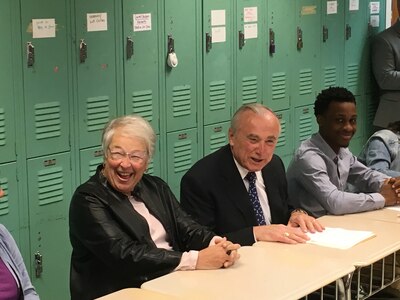
Carranza is philosophically aligned with that vision: “Excluding students from school is not the best way to deal with behavior issues,” he said in 2014 as superintendent of the San Francisco Unified School District.
But Carranza will have to balance pressure from all sides of the ideological spectrum. He will be forced to address critics who say lax discipline has created chaos in some schools and that metal detectors are more important than ever. And he will face advocates who say the city has not gone far enough in reducing racial disparities in suspensions and has not adequately trained teachers to manage behavioral problems without harsher discipline.
Carranza’s record suggests he supports the shift away from suspensions, but helping educators adapt to the city’s new discipline philosophy could earn him points with rank-and-file teachers and union officials who have complained that the transition hasn’t been smooth.
2. Will he be able to balance his wishlist with funding challenges?
Many of the items on de Blasio’s education wishlist are expensive. Expanding universal pre-K to include 3-year-olds is expected to require $700 million from state and federal sources by 2021 during a time when the state faces a $4.4 billion funding gap and a federal tax overhaul could create tighter school budgets.
The mayor’s broader efforts to outfit all schools with computer science classes, hire literacy coaches, and infuse high-need schools with social services all add up to hundreds of millions of dollars that could be harder to come by. On top of that, Gov. Andrew Cuomo has proposed shifting more of the cost of charter schools into the city’s budget (including paying for private space).
Carranza has experience with budget challenges: The Houston district is wrestling with a $115 million budget shortfall, falling enrollment, and continued costs associated with Hurricane Harvey. Though the incoming chancellor has experience managing budgets, he is essentially leaving Houston just as the district was expecting to make big cuts.
3. What will be the future of the city’s beleaguered school turnaround program?
The new chancellor is taking on the role at a precarious moment for de Blasio’s controversial and expensive “Renewal” school turnaround program. De Blasio initially described the initiative as a three-year effort to induce “fast and intense” improvements at the city’s 94 lowest-performing schools. But with a mixed record including 23 mergers and closures (and 21 schools being phased out for showing improvements), the Renewal program is now headed into a fourth year with just 50 remaining schools.
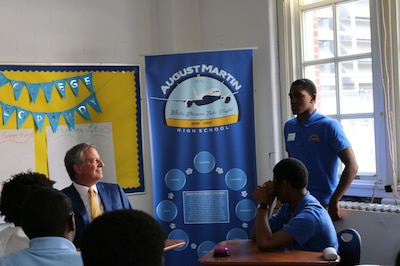
In New York, City Hall will help determine the Renewal program’s fate — and Carranza may be willing to help reset the program given the parallels to his own approach in Houston. But with dozens of schools remaining in the program, he will have to manage contentious decisions about their fate, and also hire someone to manage it.
4. How will he handle pressure to better serve the system’s highest-need students?
New York City has struggled to serve its growing population of homeless students, English learners, and students with disabilities — groups that all perform far below their peers. More than a quarter of the city’s 200,000 students with disabilities last school year did not receive all of their legally mandated services (the tracking system for those services is also notoriously glitchy). And after New York City was placed on a state “corrective action plan” that required the last mayoral administration to open new bilingual programs, the current administration has vowed to place every English learner in a bilingual program by next school year.
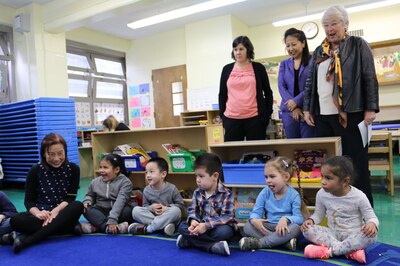
A former bilingual social studies teacher, Carranza has a track record of boosting instruction for English learners. As superintendent of San Francisco’s school system, for instance, he worked with local universities to create a pipeline of bilingual teachers. But Carranza also acknowledged Monday that the district wrestled with a special education crisis after the Houston Chronicle’s “great reporting” revealed that the state had artificially capped the percentage of students who could receive services. And while Carranza inherited that crisis, Houston has achieved only mixed success making services available to more students under his watch.
5. How will he tackle school segregation?
The new chancellor will also have to answer a growing chorus of advocates who have called for the city to better integrate its schools, which are among the most segregated in the country. It is an issue that Fariña stumbled over, once suggesting the problem could be addressed through pen pals for students.
For his part, Carranza has signaled a willingness to reckon with structural inequities: In Houston, he proposed an overhaul of the district’s magnet programs and school budget allocations. And in his opening press conference, he used the words “segregation” and “integration” — words that don’t appear in the city’s “diversity” plan. An advisory group of advocates from across the city is currently analyzing the plan and will come up with its own suggestions for the city’s next steps — steps that will fall on the new chancellor to take.
Carranza gets fired up about equity issues and “was not afraid to go up against the machine,” Jolanda Jones, an elected school board trustee in Houston, told Chalkbeat. Still, Carranza has reiterated de Blasio’s argument that some inequities are beyond the school system’s purview, and he will have to walk a tightrope between advocates who have demanded bolder action, and a mayor who has been reluctant to take on systemic changes.
6. Will he work smoothly with de Blasio?
Unlike his previous jobs running San Francisco and Houston’s school systems, Carranza won’t have to navigate school board politics or win their approval for major policy shifts or budget allocations.
Instead, he must adapt to a system where the mayor calls the shots. Under de Blasio, Carranza will be managed by a second-term mayor who has said his education agenda is set, has a reputation for being a micromanager, and has set his sights on the national stage — potentially leaving Carranza less room to shepherd big new policy changes of his own. (And Carranza will be hauled up to Albany next year to defend mayoral control from Republican lawmakers who have threatened to revoke it to exact concessions from de Blasio.)
7. How will he navigate charter school politics?
In Houston, Carranza was able to largely sidestep debates about charter schools, given their unpopularity with the district’s school board. But the incoming chancellor will have to wade into perennial debates about finding space and negotiating co-location arrangements for the privately managed but publicly funded schools. The de Blasio administration has had a hot-and-cold relationship with the sector, clashing with some high-profile charter school networks such as Success Academy, but also expanding partnerships between district and charter schools across the city.
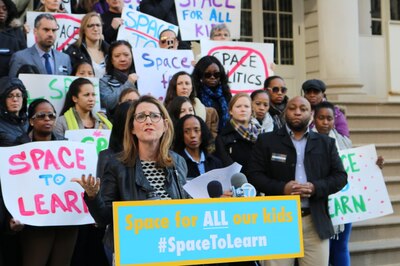
Carranza’s record suggests he will take a similar approach: He has pushed back against charter schools in some cases while opening the door to them in others. Last year, in an open letter to President Donald Trump, he argued that school choice had come at the expense of neighborhood schools, “even though,” he said, “these schools are the heart of our educational system and serve our most disadvantaged students.” But he also helped the KIPP charter network get its first high school in San Francisco off the ground. And on Monday he said “I’m pro really good schools” when asked about the sector.
Christina Veiga contributed.

